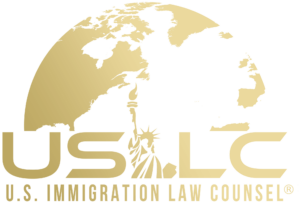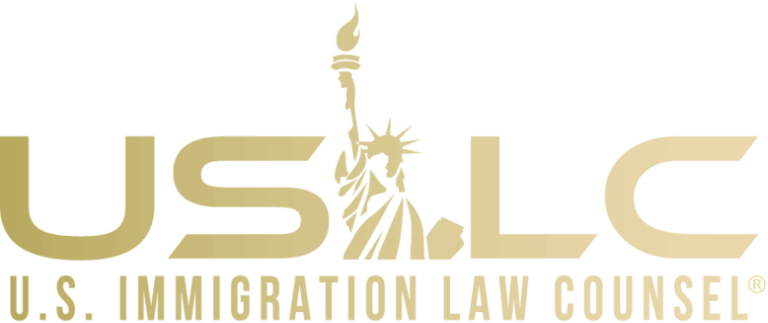If you are a student and you want to obtain a visa to come to the United States, you need to understand the F-1 visa work rules. It is not uncommon for students to want to work while they are in the U.S., but there are specific regulations around who can use CPT and OPT. It is essential to understand the student visa employment rules so that you apply for the correct visa and have realistic expectations. Here is everything you need to know about work authorization for international students.
What Is Curricular Practical Training (CPT)?
CPT, otherwise known as curricular practical training, is available to international students looking to get hands-on experience with cooperative education and internships in the U.S. A CPT student visa is a good option for students who want to legally work while they are in the U.S. obtaining their degree.
However, it is important to understand that you can only take advantage of CPT if the work opportunity is one of the requirements for your academic program in the U.S. Your employer and your school must have an agreement regarding this.
Also, if you work full-time for a year on CPT, you will no longer be eligible for optional practical training. If you still want to be eligible for OPT, you can only work part-time on CPT.
F-1 visa students can also have more than one CPT authorization at the same time.
Eligibility for CPT
There aren’t many F-1 visa work rules for CPT, but the few requirements that it has are very important. The first eligibility rule for CPT is that you have to have studied as an F-1 visa student for at least a year. You also have to be enrolled at a SEVP-certified university or college and take part in training that is directly related to your field of study and is a requirement for graduation.
To get CPT authorization, you need to first secure the training opportunity, ideally two weeks before you want to begin work. Applying two weeks in advance helps to give you the time you need since authorization can take 7 to 10 days.
What Is Optional Practical Training (OPT)?
Optional practical training, or OPT, is similar to CPT as it allows you to gain practical work experience that ties into your field of study while you are studying in the U.S. However, unlike CPT, OPT doesn’t have to be required by your academic program, which is why it is optional.
Students using an F-1 visa can work under OPT for up to a year, either before or after graduation. If you are working while in school, you could take up to 20 hours per week, while if you work after you have graduated, you can work full-time. Pre-completion OPT refers to those using OPT before graduation, while post-completion OPT refers to those using OPT after graduation.
Something to keep in mind is that STEM majors could be eligible for STEM OPT extension, which would allow them to take part in post-completion OPT for up to 24 months instead of one year. This usually applies to F-1 students who are working towards a degree in engineering, science, technology, or math.
Eligibility for OPT
Like CPT, to be eligible for OPT, you have to have been a full-time student for at least a year, and the job has to directly relate to your field of study. You can start the process of getting OPT authorization once you receive an I-20 form with an OPT recommendation from one of your school officials.
Once you have these documents, you need to fill out form I-765 with the USCIS, which grants you work authorization. You will be able to legally begin working once the USCIS has issued your employment authorization document, or EAD.
Keep in mind that you will need to pay taxes on any income made through OPT and will need to fill out a W-4 tax form with your employer before you get your first paycheck.
Differences Between CPT and OPT
Although CPT and OPT F-1 visas are similar, there are some differences you need to keep in mind. These differences can have a significant impact on which option you qualify for and which is the best fit for your situation.
Here is a breakdown of the main differences between CPT and OPT for international students on an F-1 visa:
- CPT has to be required by your academic program, while OPT is optional.
- CPT is only an option before you have graduated, unlike OPT, which can be used before or after graduation.
- OPT requires you to apply and get approved for an EAD.
- OPT requires a $410 fee when you apply for your EAD, whereas CPT doesn’t have any additional fees.
Before you begin the process of obtaining either CPT or OPT, it is strongly recommended that you first hire a student visa lawyer. Getting legal representation will ensure everything is done correctly and you don’t run into any time-consuming problems with the USCIS.
Hire an Immigration Attorney Today
Do you want to work in the U.S. with an F-1 visa? Contact us today at U.S. Immigration Law Counsel at 800-666-4996 to speak with an immigration attorney about your situation. We will deal with the government, so you don’t have to!
FAQ
Can I work full-time on CPT?
CPT allows you to take part in either full-time or part-time work, depending on whether or not you want to also take advantage of OPT.
When should I apply for OPT?
You should apply for your EAD at least three months before you plan on starting your job, as the processing time for this document can take 90 days or longer.
What happens if I work without authorization on a student visa?
Working without authorization while in the U.S. with a visa is a serious offense and would result in you being forced to leave the United States. It is also very likely that you wouldn’t be able to get an EAD in the future and you may even be barred from reentry.




